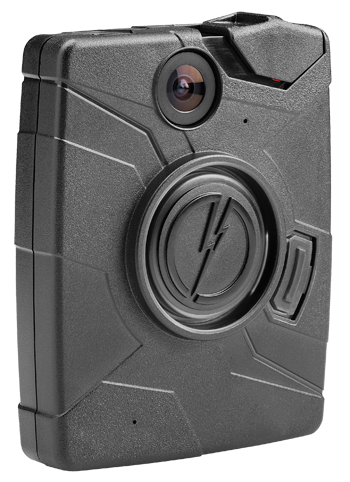Watching the Watchmen: The Hows and Whys of Body-Worn Police Cameras
December 17, 2014
However you fall on the issues, by now it should mean something when you hear names like Ferguson, Michael Brown, and Eric Garner. It certainly does for law enforcement. But is having police wear cameras the solution?
After staying quiet on the issues for months, the White House issued a statement on Dec. 1 calling for efforts to strengthen relationships between law enforcement and the communities they serve. As part of this new “Community Policing Initiative” President Obama has proposed a total $263 million investment in body-worn cameras for police and other law enforcement.
“As part of this initiative, a new body-worn Camera Partnership Program would provide a 50 percent match to States/localities who purchase body-worn cameras and requisite storage,” the White House statement said. “Overall, the proposed $75 million investment over three years could help purchase 50,000 body-worn cameras. The initiative as a whole will help the federal government efforts to be a full partner with state and local [law enforcement agencies] in order to build and sustain trust between communities and those who serve and protect these communities.”

When the Roman poet Juvenal coined the term “Who watches the watchmen?” in the late 1st century he couldn't have imagined camera technology or how ubiquitous it would become.
While national protests and media coverage has certainly put the body camera technology in the public eye, Steve Tuttle, VP Strategic Communications at Taser, the largest manufacturer of body-worn cameras for law enforcement, said such cameras have been around for nearly a decade now. “[Taser] actually started in the camera business by adding Taser Cam recorders to our Taser weapons back in 2005,” Tuttle said. “That spurred the idea that we could have enhanced accountability and transparency if we record the suspect.”
As of Q3 2014, Taser has reported $15.3 million globally in inventor bookings of its body-worn cameras from mostly small- to medium-sized law enforcement agencies— an inflection point that hit before the Ferguson tragedy. “Really what [Ferguson] did was it legitimized that there is technology out there that may take some doubt and uncertainty away from certain police actions and created this massive public awareness that these cameras existed,” Tuttle said.
Recent incidences of police brutality have also drawn attention to a need for context, particularly in an era where any moment can be captured at any time with the press of a button on a cellphone. “While [cellphone video] is good evidence, it's not the officer's perspective and it never captures the full context,” Tuttle said. For him, one of the greatest benefits lies in being the intermediary between officer and citizen reports of an incident. “The isn't to be Big Brother. The point is to help [officers] out in an unsustained allegation were there were no witnesses. And it also helps when there were.”
Policing With The Cloud
Taser's first venture into body-worn cameras came from a partnership with sunglass company Oakley to mount a camera onto a piece of eyewear. The resulting Axon Pro, what Taser calls the first body-worn camera, debuted in 2009, but has since been discontinued. “It was like the Ferrari, but the size of a dinosaur,” Tuttle joked of the original device. “It had all the bells and whistles, but it had a lot of wires, it was fairly bulky, and it wasn't really comfortable.”
Ultimately, all of the Axon Pro's built-in features—recording GPS location, radio channels, and on-board data storage—were just too much. The model demonstrated that body-worn cameras were possible, but they had to get smaller and lighter.

“The ergonomic side of making something comfortable for the head is not something you can do overnight,” Tuttle said. “We got smart with how we did it and reduced some of the clutter.” The task was in striking a balance between something that is functional, lightweight, and usable but also able to withstand the vigor of police work, including passing heat, cold, and impact tests. “A lot of people don't think about just how robust that equipment has to be for police,” he said. “Give it to an officer and a day later and it'll be broken.”
“The secret sauce was storing all those videos and going to the cloud,” Tuttle said. Taser's newest models, the Axon Flex and Axon Body, embrace cloud-based data storage that eliminates a lot of the size and bulk of the previous model (the sunglass-based Flex weighs in at about 3.5 oz). The cameras capture 640 x 480 resolution video at a 4:3 (fullscreen) aspect ratio with a 480P screen resolution. The cameras also feature 8 GB of internal flash storage—which equates to four to 13 hours of video depending on settings). In its default settings the Axon can capture about 9 hours and 45 minutes of video with a one-hour video file clocking in around 810 MB in size.
Footage from an Axon camera from police in Mesa, AZ
Which begs the immediate question. Where's all that video going? Who's keeping track of those potentially terabytes of data? Rather than a large physical hard drive, the Axon loads all of its videos to an encrypted, cloud-based server that Taser has dubbed Evidence.com. To prevent fraud and tampering there's no delete button on the hardware. An officer attaches the camera to a dock/charger unit that uploads the video via Internet where it can be tagged and sorted for later reference. Authorized personnel can then retrieve and view the video from any location (even at home with additional security parameters in place) and officers can use the camera's Bluetooth functionality to stream video to their smartphone (the streaming video is not saved to the phone).
Prior to this the video is stored locally on the camera, which Tuttle admitted could be problematic if a camera were taken from an officer or broken before the video could be transferred.
About the Author(s)
You May Also Like

.jpg?width=300&auto=webp&quality=80&disable=upscale)

